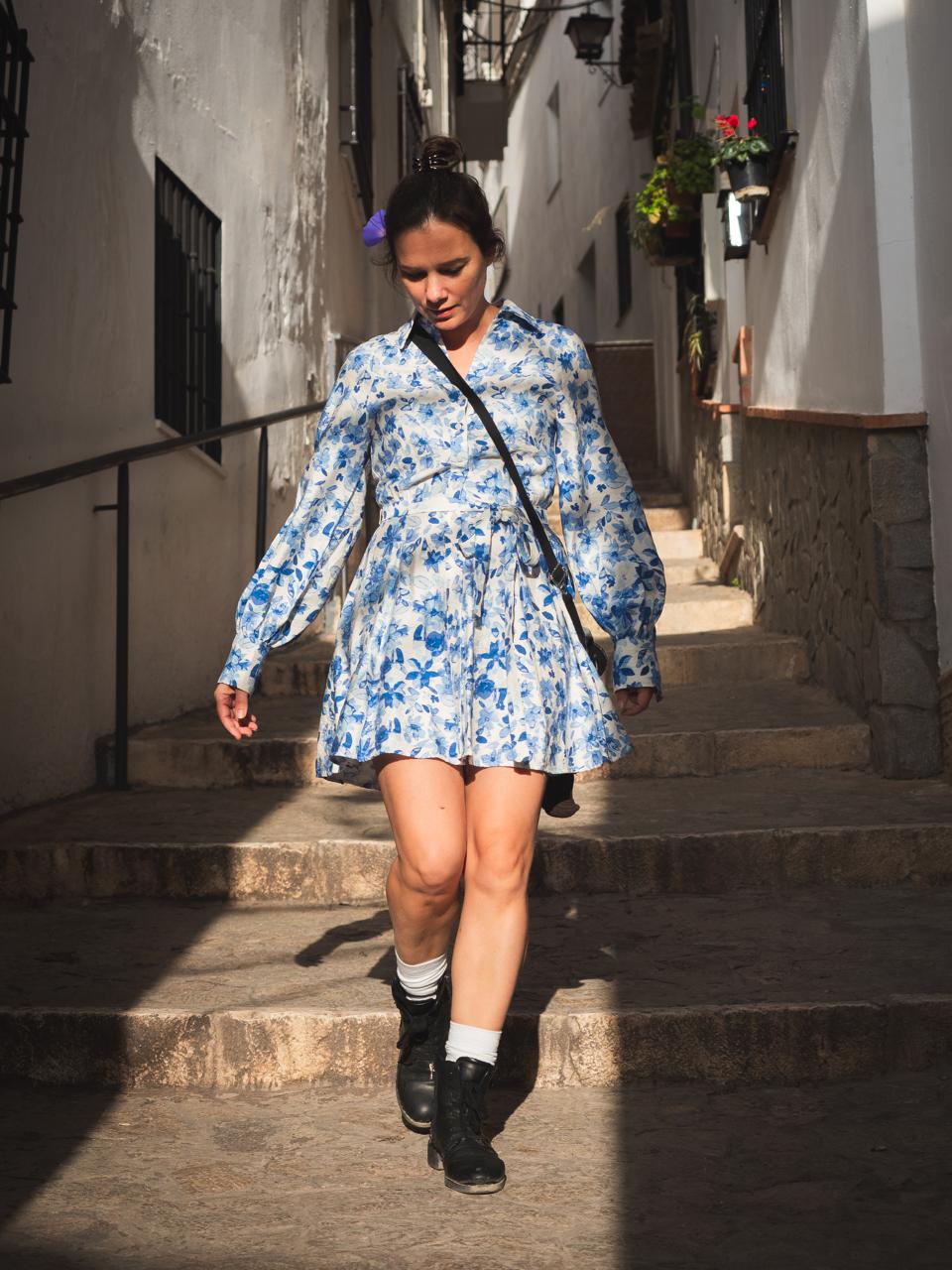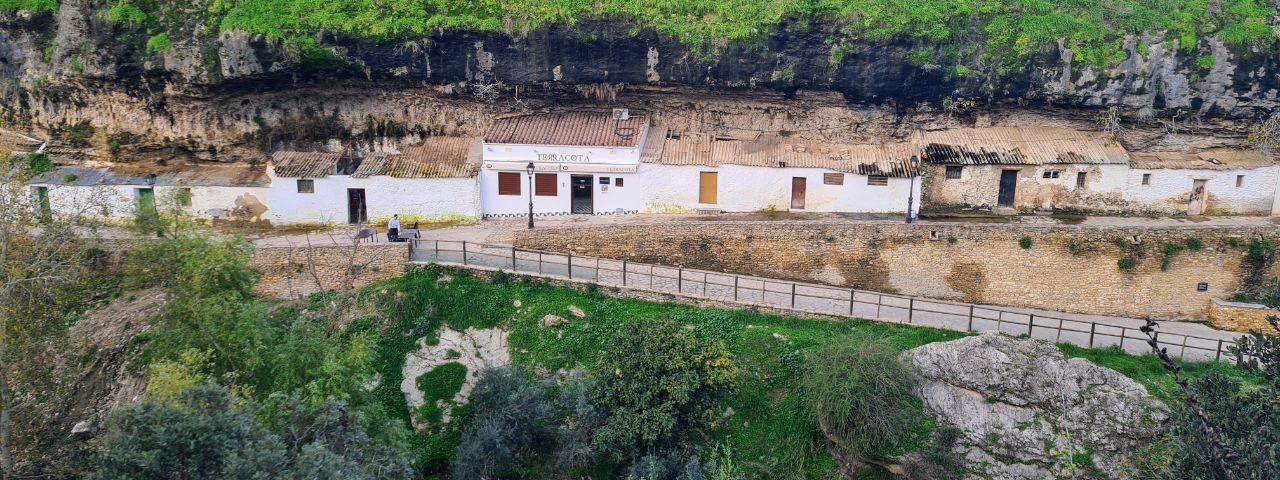We hop into the car, eager to discover more of Andalusia’s treasures. This remarkable region dazzles visitors with its contrasting landscapes – from Sierra Nevada’s snow-capped peaks to Europe’s only desert, the Tabernas. Today, however, we’re hunting for the jewels of Andalusia: the White Villages.
The White Villages (Pueblos Blancos) embody the authentic soul of Andalusia and offer a living portal to centuries past. These picturesque towns captivate visitors with their winding narrow streets and silhouettes that blend harmoniously into the mountainous backdrop.
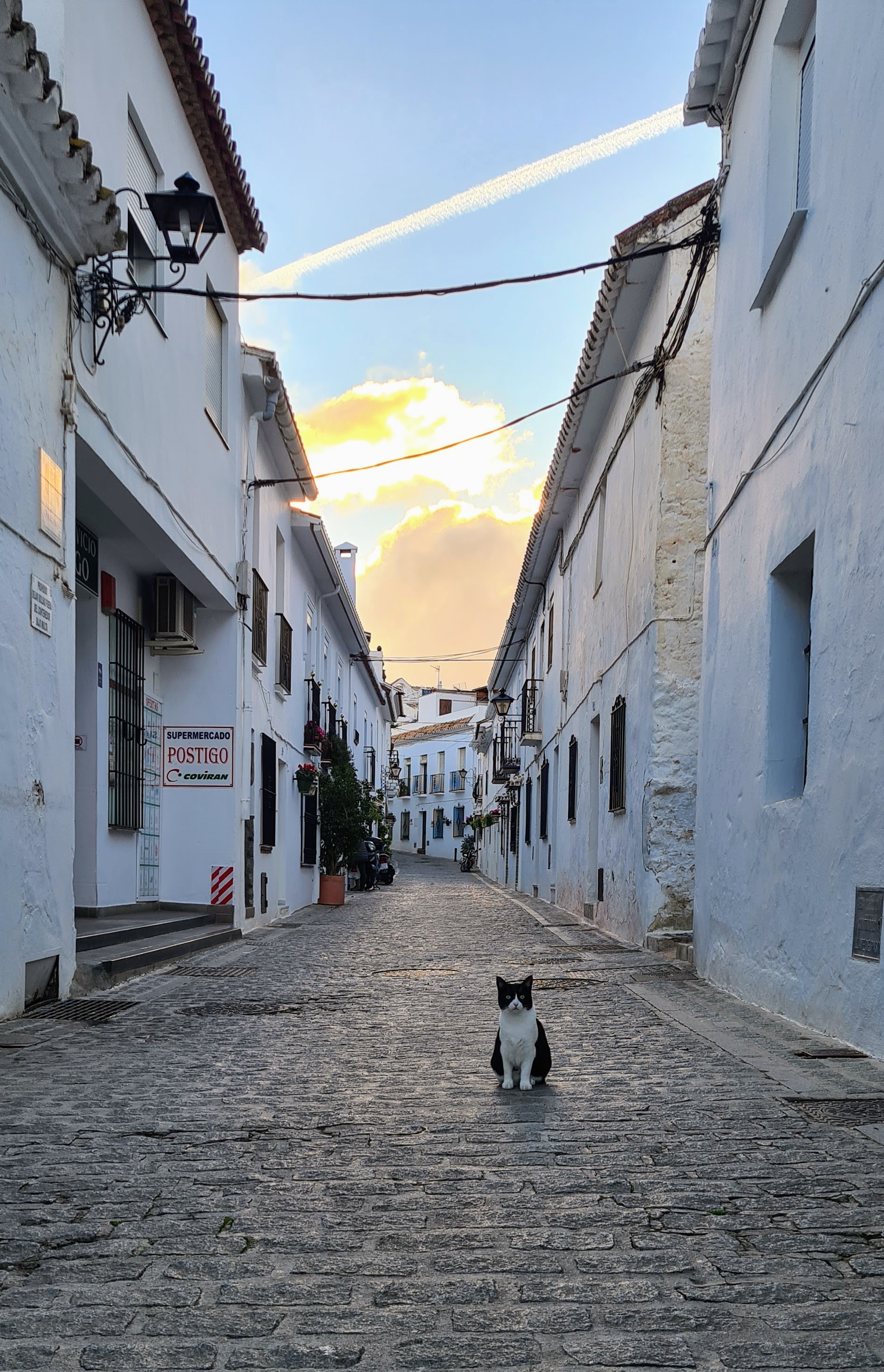
The White Villages earned their distinctive name from the deep-rooted tradition of whitewashing walls with lime. This practice flourished during the Moorish period for several clever reasons:
- The brilliant white color serves as nature’s own air conditioner. By reflecting sunlight, the White Villages maintain refreshingly cool interiors even when summer temperatures soar to blistering heights.
- The lime coating doubled as a medieval disinfectant – naturally sanitizing walls and warding off pests and bacteria. In an era before antibiotics, the White Villages were ahead of their time in preventative healthcare!
- Local authorities weren’t just being picky when they mandated uniform architectural appearance. White became the official standard that united the White Villages aesthetically, creating that postcard-perfect uniformity we admire today.
The White Villages weren’t just pretty faces during Moorish rule (711-1492) – they functioned as strategic fortresses. Their positions perched dramatically on mountain slopes allowed the White Villages to effectively guard against invasions. Following the Reconquista, most White Villages proudly preserved their Moorish architectural influences.
For our White Villages adventure, I’ve carefully selected a diverse sampling:
Mijas – The Flowery White Village
This charming town nestled in the mountains near Costa del Sol will confound you with its maze of winding streets. Getting lost is inevitable in this White Village – but fear not! Colorful flower pots will guide your wanderings. They adorn pavements, cling to traditional white walls, and perch cheerfully on windowsills – the White Village of Mijas seems to bloom from every corner. The town even boasts dedicated “flower steps,” amplifying its romantic atmosphere. Mijas’s unique layout developed from necessity – this White Village clings dramatically to a steep mountain slope, forcing streets to twist through impossibly narrow and steep routes. This unusual planning gives town extraordinary charm and authenticity.
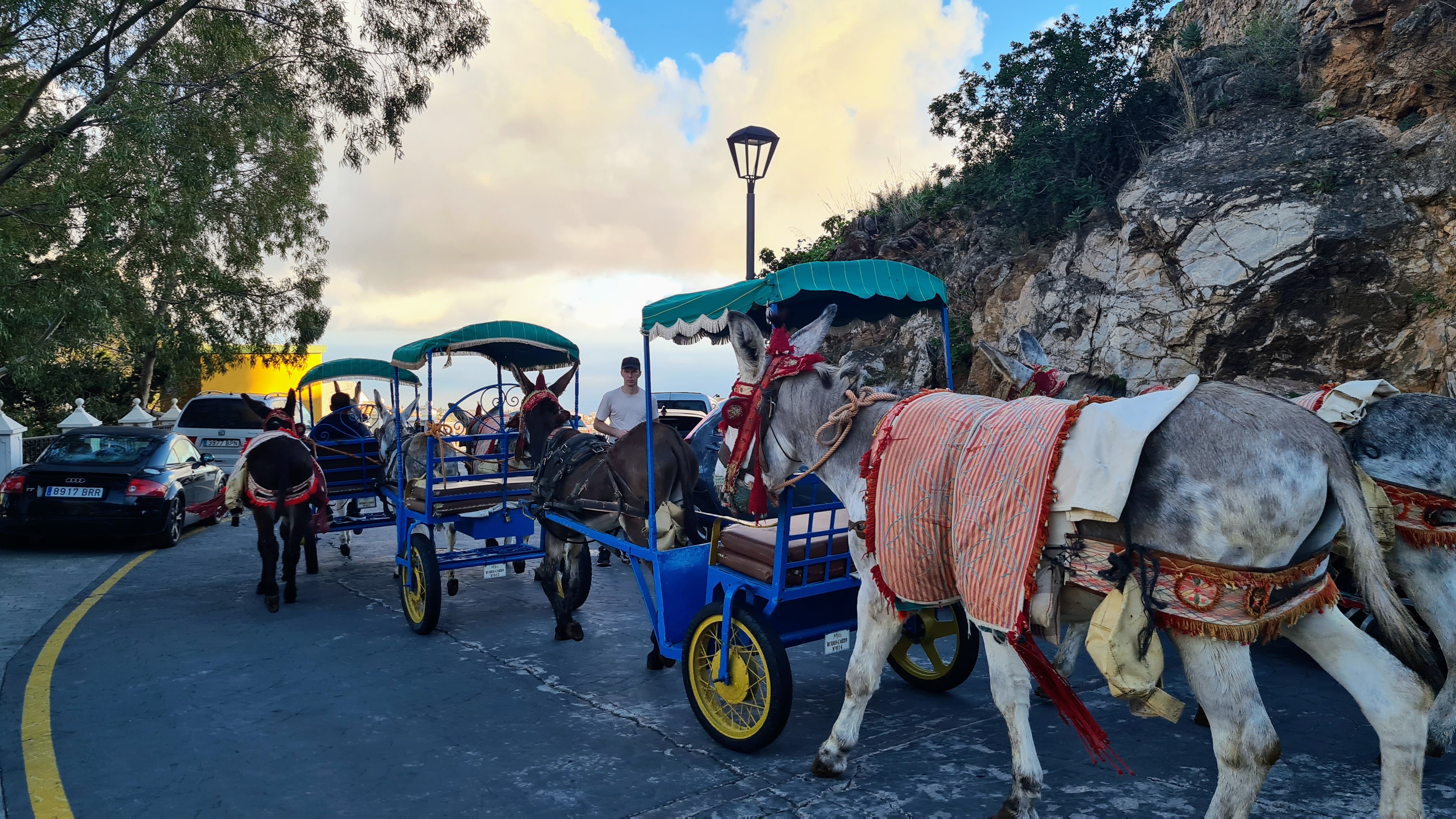
Here you’ll encounter a unique traditional transportation method – the Mijas burros-taxi (donkey taxi), which emerged in the mid-20th century. Local residents ingeniously began offering tourists donkey rides when they noticed visitors photographing them and requesting rides. Today, it’s not just a practical mode of transportation but also a kind of symbol of the city’s culture and history.
Another significant landmark in this White Village is the traditional oval bullring (Plaza de Toros). Unfortunately, we couldn’t get inside. Although such venues spark heated debate today, it remains an important architectural testament to Spanish traditions that many White Villages preserve.
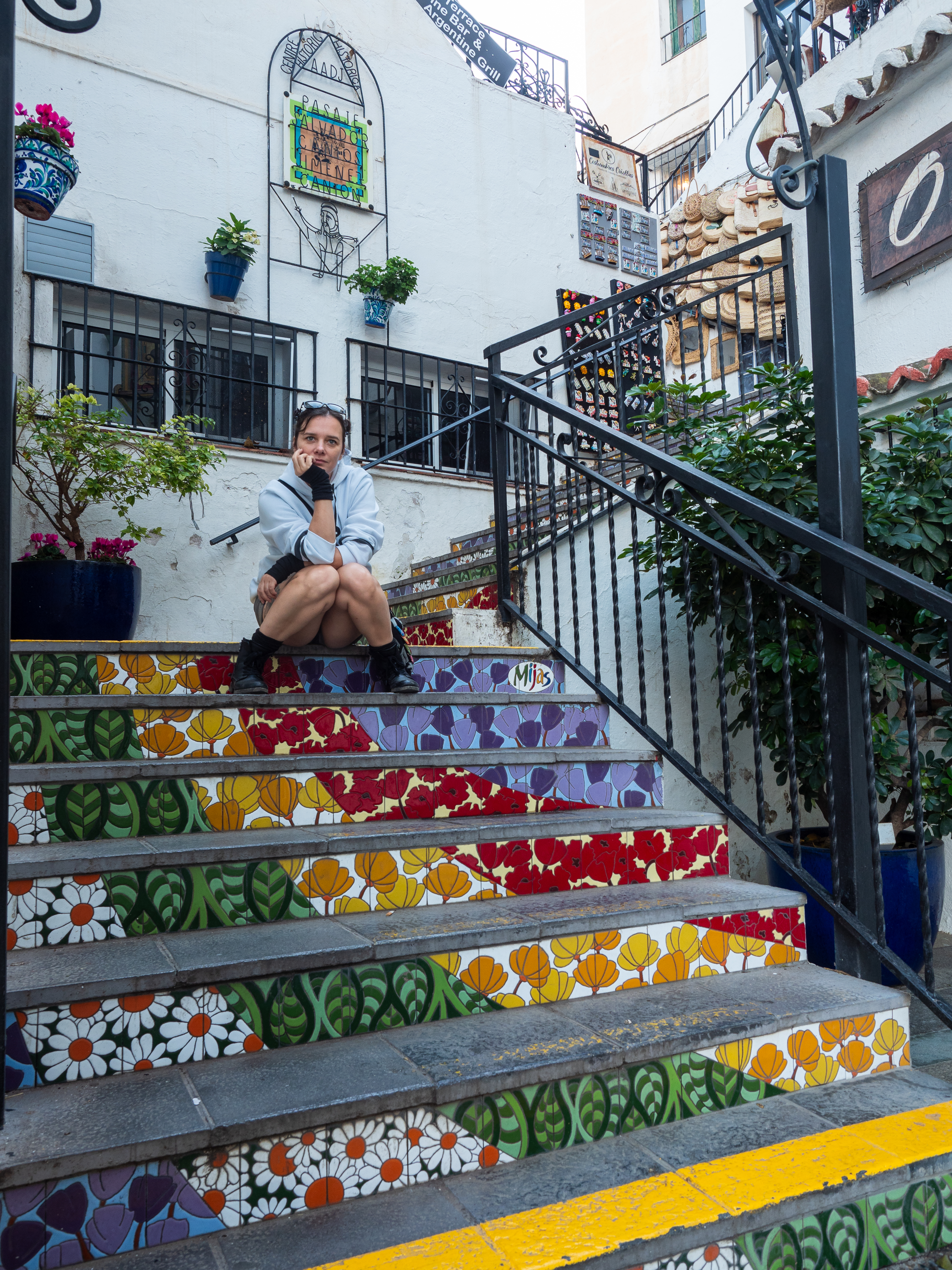
Practical advice for visitors: I recommend visiting this wonderful town either very early in the morning before many tourists arrive or late in the afternoon when the day’s heat begins to subside. Parking spaces here are extremely limited due to narrow streets and high tourist traffic, so it’s worth planning your trip in advance.
Setenil de las Bodegas – Living Under a Rock is Not a Problem, But a Privilege!
And an exceptional experience… This amazing Andalusian town is a true architectural marvel where people literally live under massive rocks. Here, houses are not only impressively beautiful but also incredibly functional. The natural rock formations serve as built-in roofs and walls, creating a perfect microclimate that shields residents from Andalusia’s scorching summers and chilly winters.
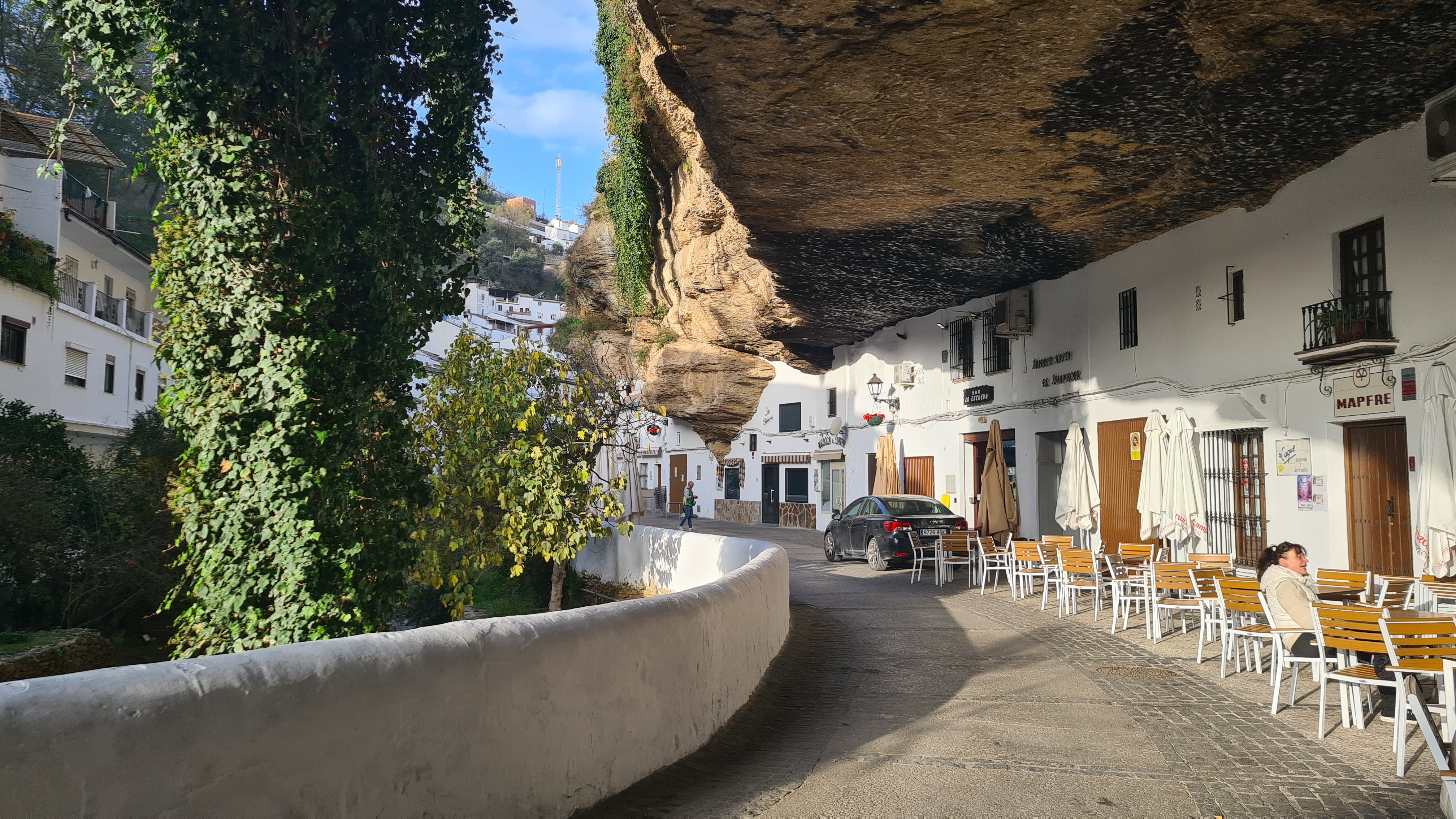
The origin of the town’s name is also interesting. It comes from the Latin term “septem nihil” (seven times nothing) – legend claims the town was difficult to capture during the Reconquista, as it resisted Christian armies seven times.
Architecturally, Setenil de las Bodegas is a unique example of how people can live harmoniously with nature, adapting the environment to their needs. Rocks here are not an obstacle but a natural source of building materials and shelter. Talk about sustainable living before it was trendy!
In our opinion, the most impressive streets are Avedina de Carmen (the main street that literally cuts into the rocky landscape) and the steeply sloping Calle Herriera.
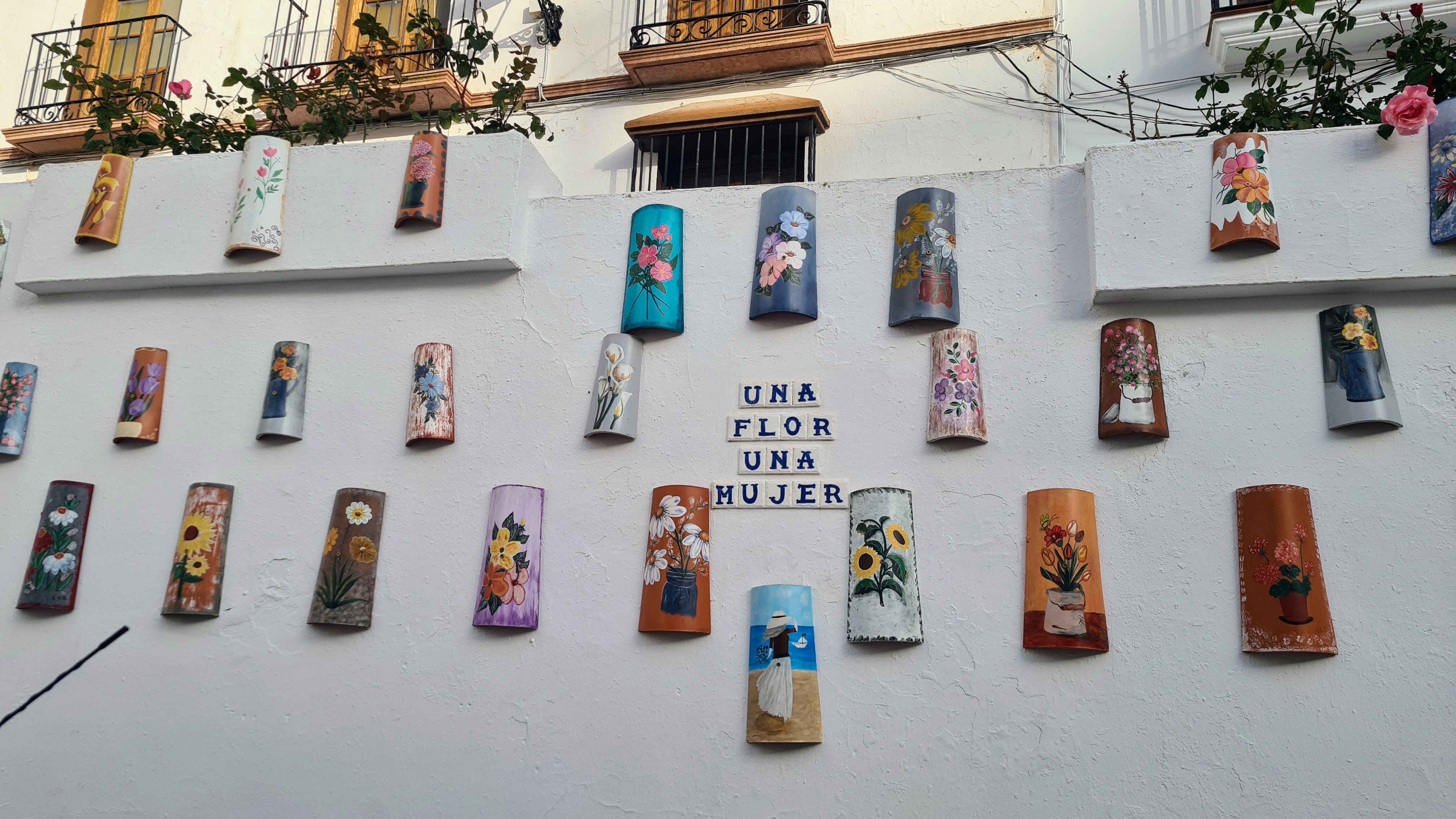
I recommend choosing a well-lit time of day, preferably morning. This way, you can better perceive the town’s architectural features, find parking without battling crowds, and enjoy coffee without being swept away in a tourist tsunami. This White Village stole our hearts completely.
Villaluenga del Rosario – Where Goats Outnumber People
Loaded with Spanish village vibes, I can confidently say that in the smallest town of Cadiz province, Villaluenga del Rosario, life flows like a wonderful cheese recipe – slowly, with love and the scent of tradition. This tiny village, located in the heart of the Grazalema Natural Park, is a true treasure for those seeking authentic Spain and culinary discoveries.
Here, queso payoyo cheese is not just a product, but a true cultural ambassador. This unique goat cheese has been awarded multiple times in international competitions. The town’s inhabitants are even called payoyos.
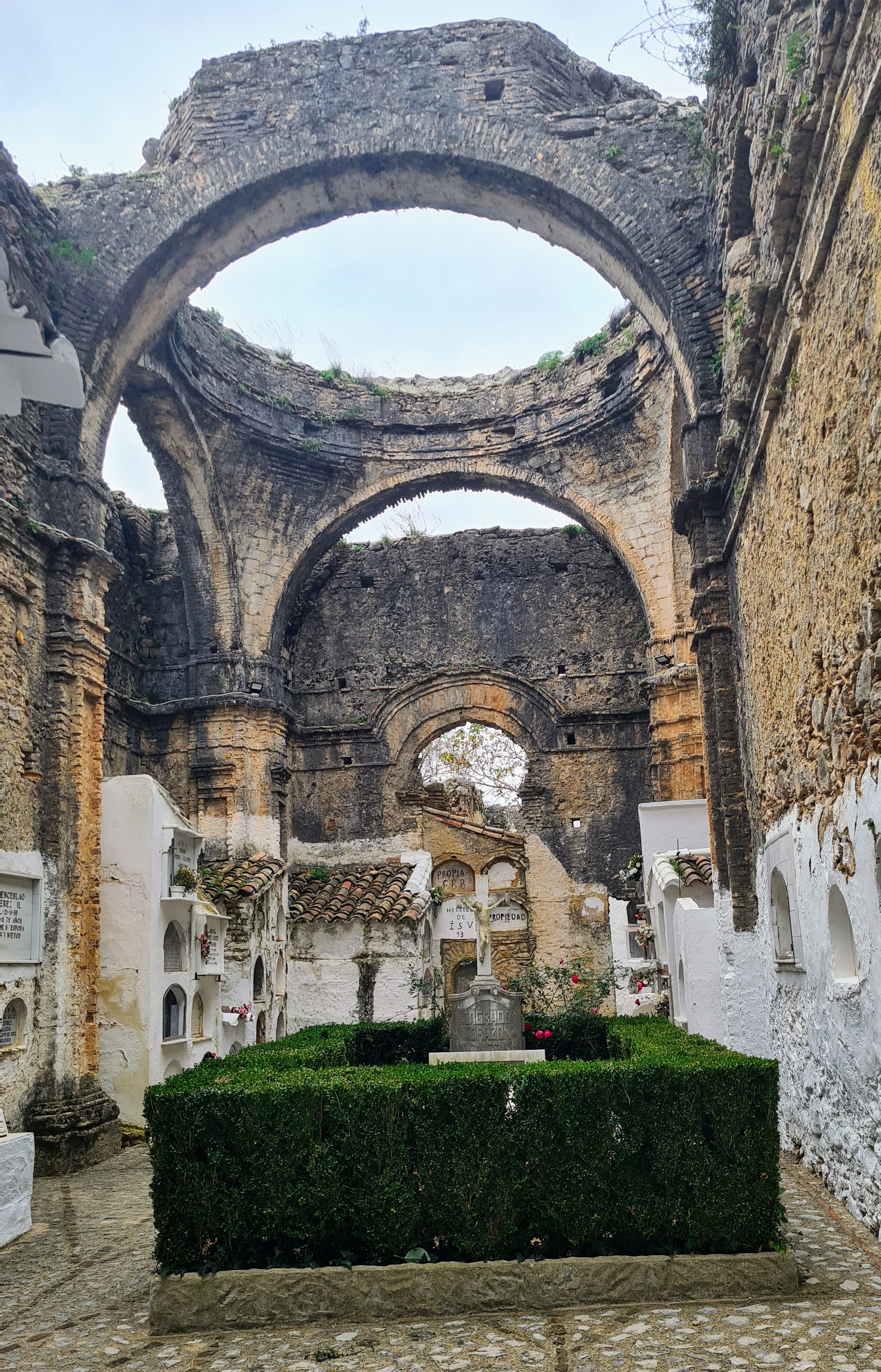
The main town highlights? Despite its small size, Villaluenga also has a small but old bullring where traditional bullfights still take place. Perhaps the most Instagram-worthy spot in this White Village is the cemetery nestled inside a burned-out church – macabre yet mesmerizing.
Júzcar – Blue is the New White
Or I’m blue da ba dee da ba di… In 2011, the Júzcar community decided it would be fun to commemorate the global Smurfs (Pitufos) movie premiere. This required 9,000 liters of blue paint – enough to repaint all town buildings, including houses, church, and even cemetery. Initially planned as a temporary marketing stunt, those 9,000 liters of blue paint unexpectedly became the White Village’s golden ticket to tourism success, a true gold mine. Tourists flocked to the blue village, and locals quickly realized this project could be their new revenue stream.
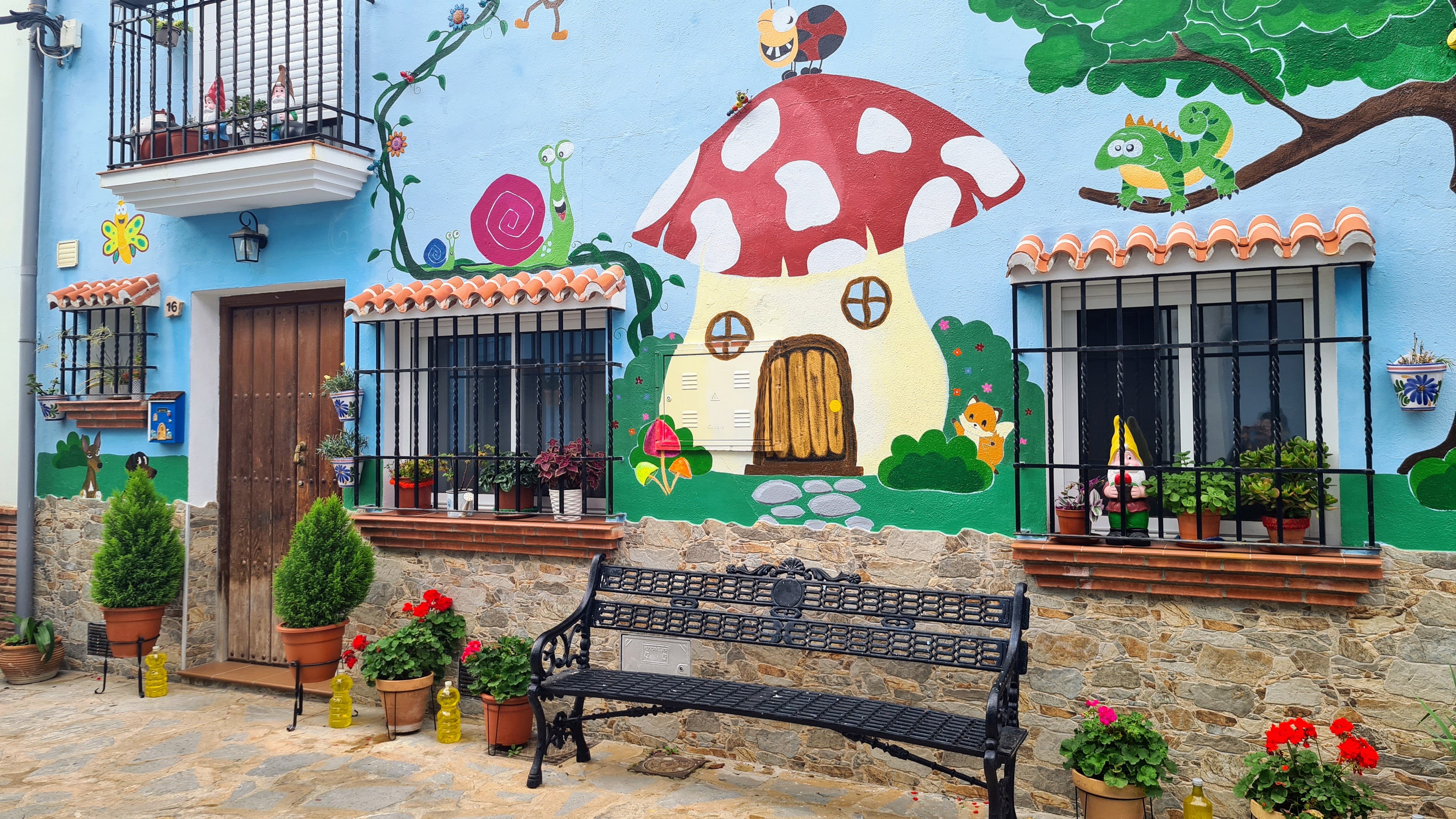
Smurf-themed businesses began sprouting like mushrooms (pun absolutely intended). Some residents adorned walls with Smurf murals, others constructed Smurf statues or organized themed tours and festivals. Locals offered everything – from Smurf caps and blue manicures to Smurf-themed accommodations and coffee with Gargamel himself. The experiment succeeded brilliantly, and blue became this White Village’s new identity.
However, like in many great stories, complications arose. Studio Peyo, holding the Smurfs trademark rights, demanded 12% of the town’s revenues. Heated debates ensued, and ultimately Júzcar decided to abandon the official Smurf Village status. Despite this, the rebellious town preserved its blue aesthetic and continues to enjoy tourist attention.
Today, Júzcar still permits subtle Smurf-themed activities in its streets, but only to the extent that it doesn’t provoke additional legal disputes with Studio Peyo. The experiment worked – the blue color, which started as a temporary idea, became an integral part of the town’s identity.
Ronda – 120 Meters Above the Ground
Ronda ranks among Andalusia’s most famous White Villages, renowned for its breathtaking El Tajo bridge spanning a 120-meter gorge. This town claims status as one of Spain’s oldest settlements, with roots stretching back to Celtic times when it was known as Arunda.
During the Moorish era, the city became the capital of the Ronda taifa kingdom, called Izn-Rand Onda, and due to its strategically unique geographical position, served as excellent defensive fortifications during the Reconquista. This city was one of the last Moorish fortresses to fall to Ferdinand and Isabella in 1485.
One of Ronda’s most famous highlights is the historic Puente Nuevo (New Bridge) stretching dramatically across the stunning El Tajo gorge. The best place to photograph the bridge with the waterfall is from the Arabic arch – a fragment of what was once the Moorish wall. While you can pay to descend to the bridge’s base, I think the view from the Arabic arch says enough.
Ronda has heavy traffic and narrow streets, so parking can be challenging. If you only want to see the Ronda bridge, you can park here and avoid the city’s chaos.
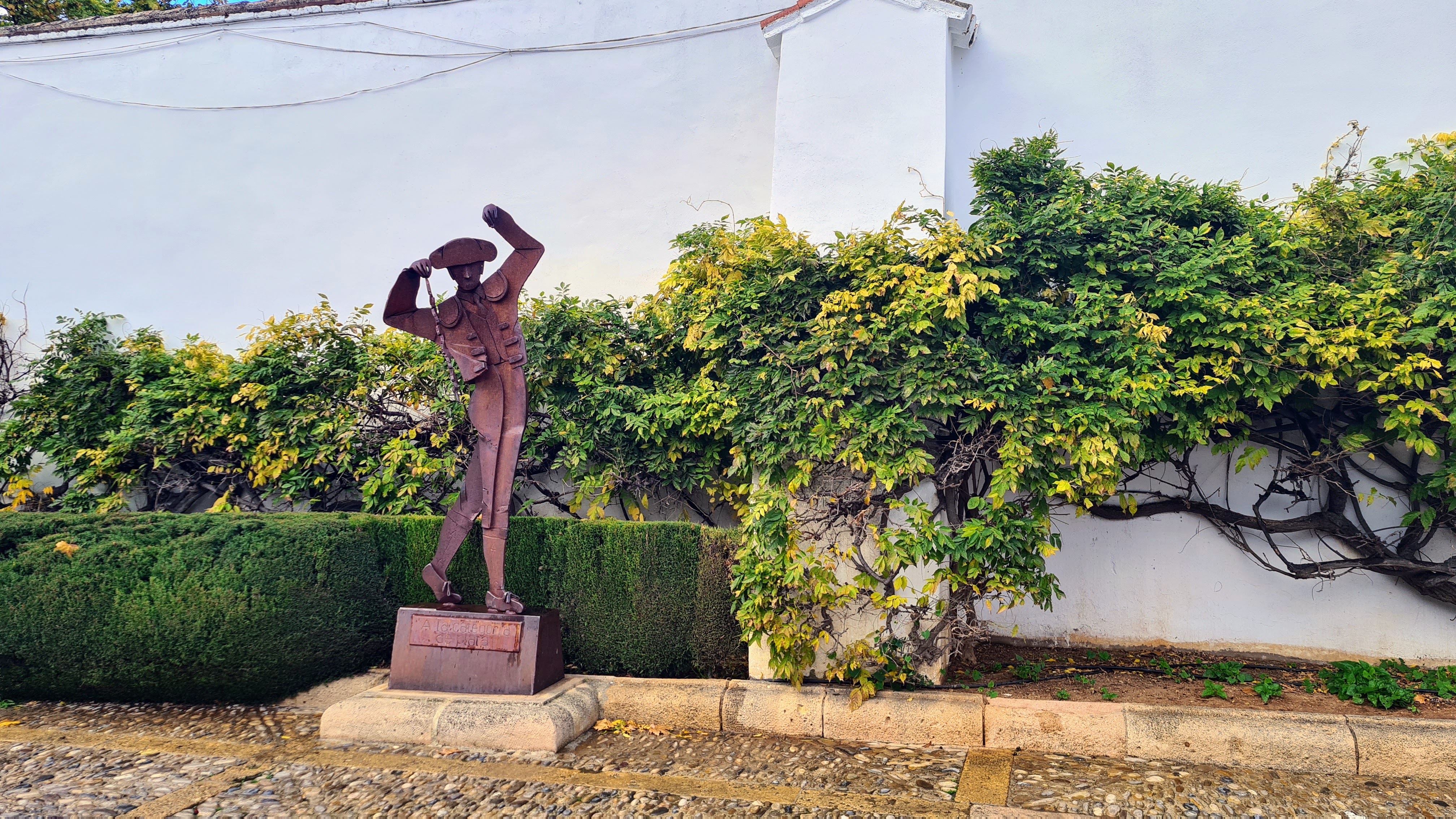
Ronda also claims fame as the birthplace of modern bullfighting. The historic Plaza de Toros arena, constructed in the 18th century, stands as one of Spain’s oldest and best-preserved bullrings and is still in use. The arena holds 5,000 spectators. Once inside for 9EUR, arena immerses visitors with a true Colosseum spirit – you can feel the ancient arena’s atmosphere while walking on orange sand.
Ernest Hemingway lived and wrote in this town, vividly depicting Ronda’s bullfights in his novels. A dark legend speaks of Civil War atrocities (1936-1939) where, according to local tales, both Republican and Nationalist supporters met their end by being hurled from the gorge into the valley below. These unverified stories inspired scenes in “For Whom the Bell Tolls.” So while walking through Ronda, don’t ask for whom the bells toll – they toll for you.
Another fascinating attraction in this town is the Arabic SPA. The Arab Baths (Baños Árabes) date back to the 13th century. Though abandoned after the Reconquista, these baths rank among Spain’s finest examples of their kind.
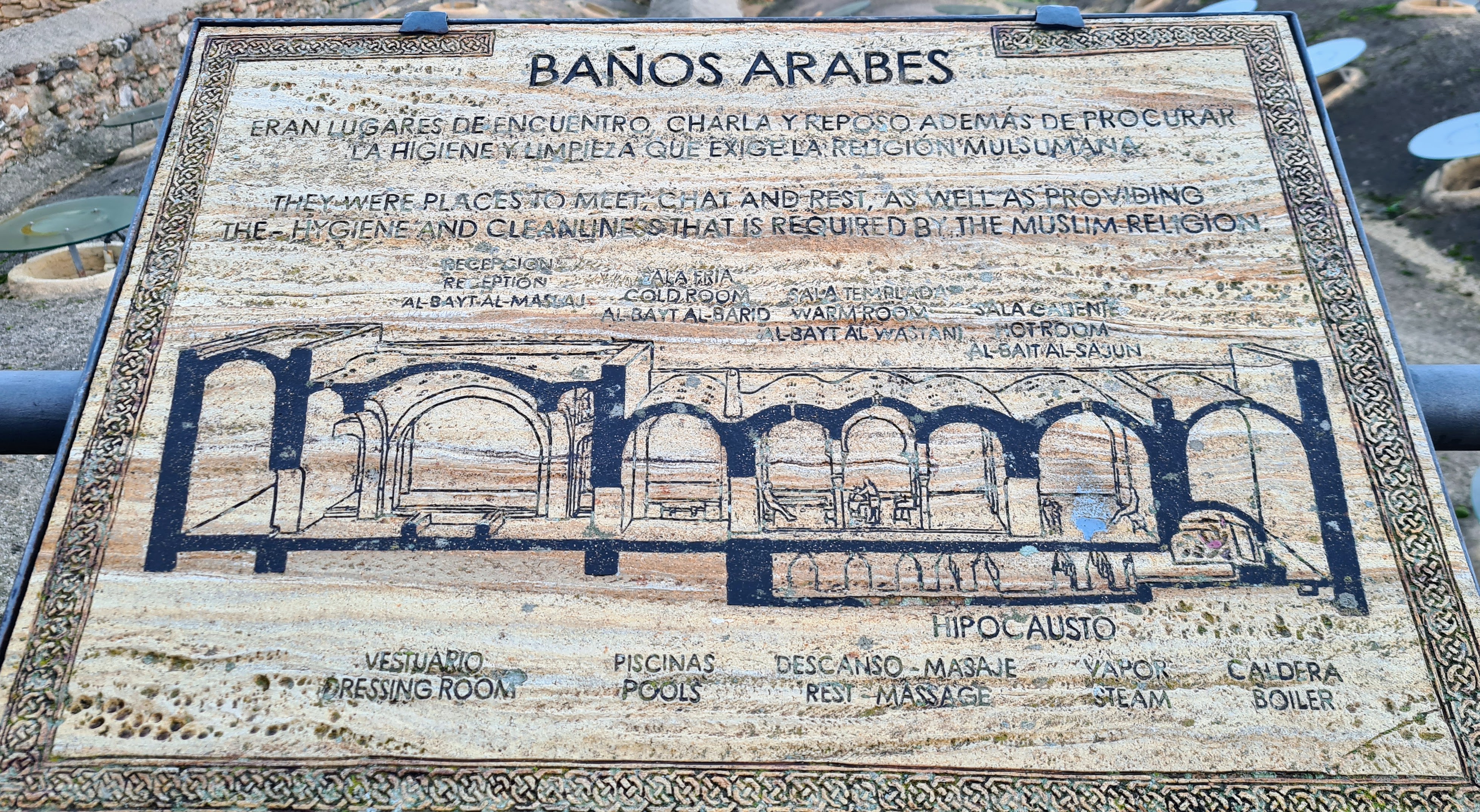
For 4.5 euros, visitors can explore the complex, descending into a reception hall leading to cold baths and a spa chamber adorned with starry domes and Moorish arches. The hottest room sits at the end, backed by a boiler room where a furnace heated the floor. Water on the floor would rise as steam, creating a natural sauna. An aqueduct channeled water from a nearby stream into the White Village’s bath complex. The entire structure lies underground, making temperature regulation easier.
These baths served dual purposes: public bathing facilities adjacent to the mosque (as Islamic tradition requires cleaning your body before spiritual cleansing) and a welcoming point where weary travelers could recover after long journeys.
Ronda stands out with its rich Muslim heritage. Besides the eye-catching Moorish defensive walls, you’ll find:
- Casa de San Juan de Bosco – a building breathing Nasrid heritage
- Palacio de Mondragon – a 14th-century Moorish villa maintaining authentic architectural details
- Casa del Gigante – from the Moorish 13th century. The house is named after statues found inside
- Casa del Rey Moro (Moorish King’s House) – A misleading name, but built on old Moorish foundations, with its main feature being a water well with several hundred steps

Mythology enthusiasts should visit the Plaza del Socorro square. Here stands Hercules – flanked by two lions – the legendary hero who, split the mountains to create the Strait of Gibraltar, earning a place on Andalusia’s coat of arms.
According to legend, Hercules journeyed west on one of his twelve labors – to capture the cattle of Geryon in what is now Spain. Encountering a mountain range, rather than climbing over, Hercules simply parted the mountains. Thus formed the famous Pillars of Hercules – Gibraltar Rock on one side, Jabal Musa (Moses’ Mountain) on the other.
We chose accommodation near Ronda. For the first time, I saw a self-registration at a hotel, where an automatic machine scans passport details, takes your photo, and issues the room key. White Villages are trully embracing modern technology!
